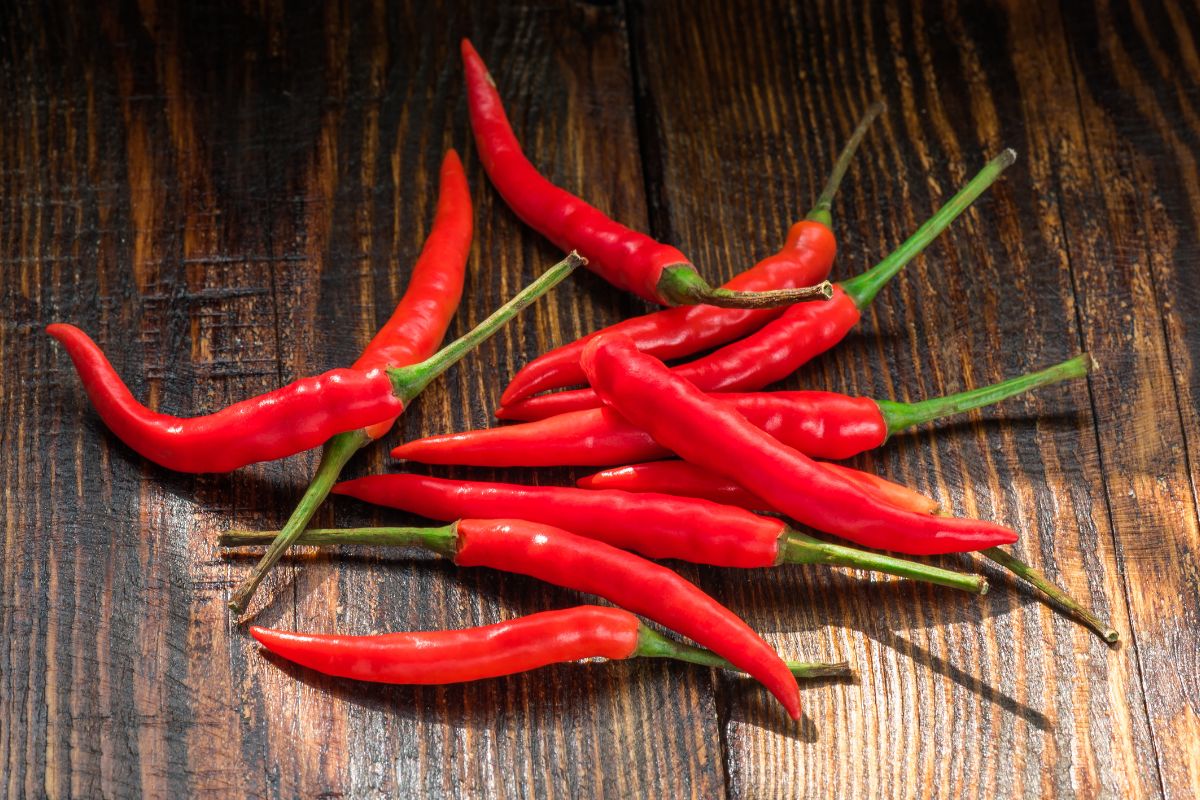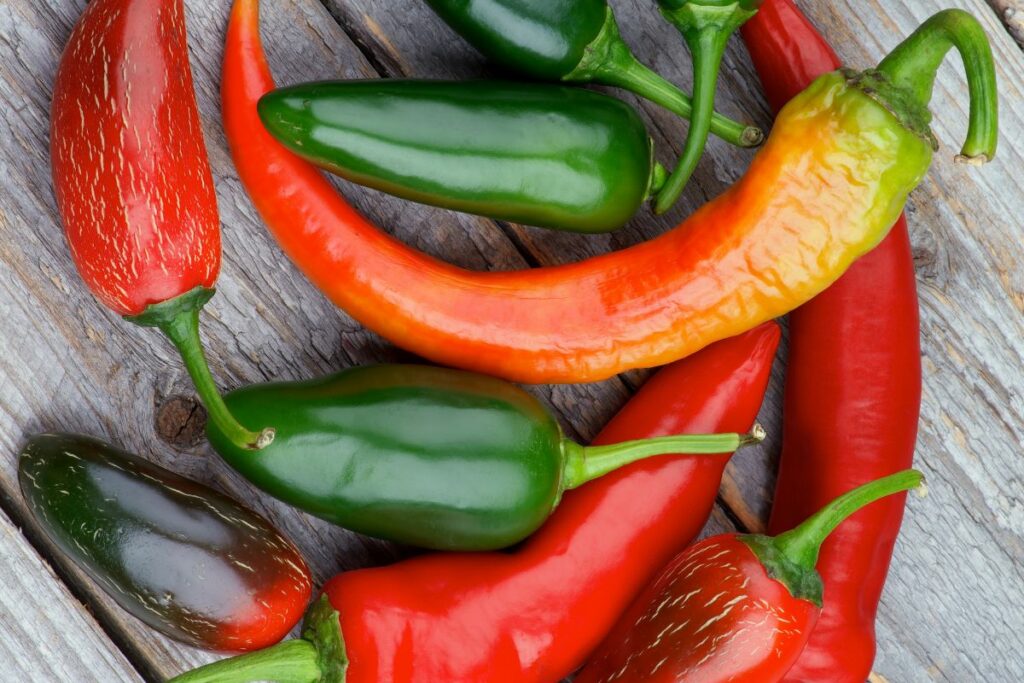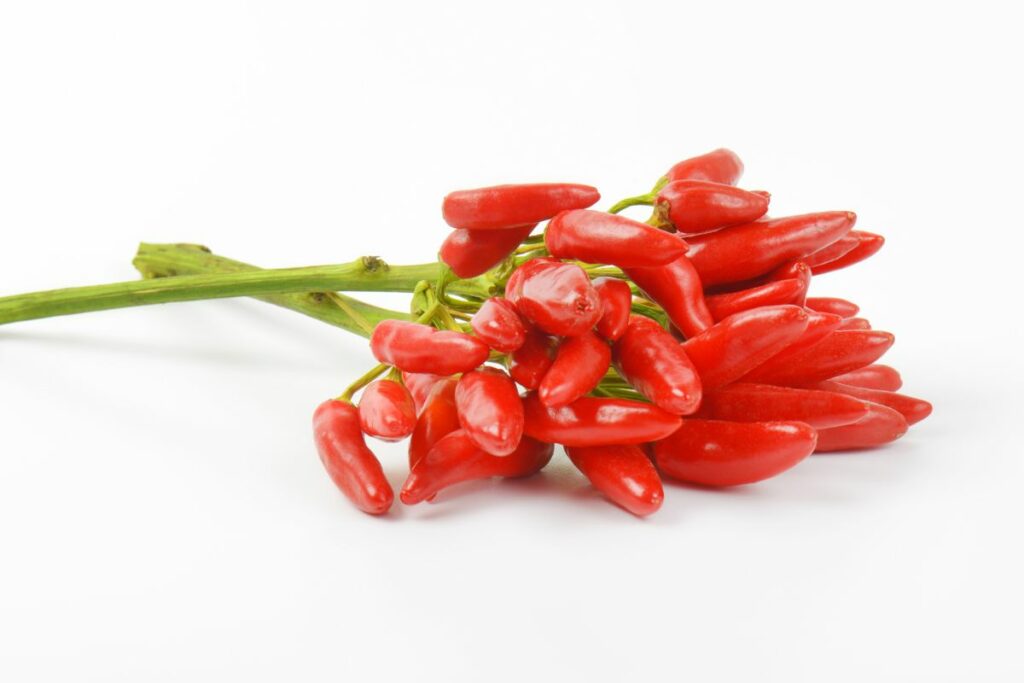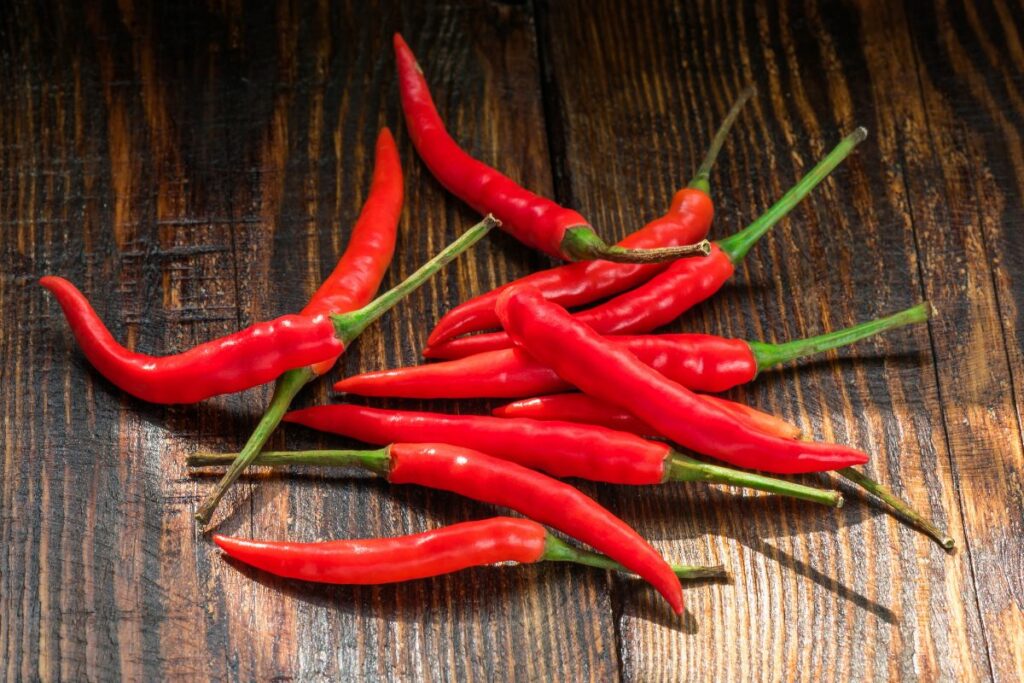Bird’s eye chili is a small and fiery pepper that is commonly used in Southeast Asian cuisine, particularly Thai, Indonesian, and Malaysian. It is known for its intense heat and distinct flavor, which can be difficult to replicate in dishes that call for this ingredient. Fortunately, there are several substitutes available that can provide a similar taste and level of spiciness.
One of the best substitutes for bird’s eye chili is the serrano pepper, which is native to Mexico. It has a similar heat level and fruity flavor that can enhance the taste of many dishes. Another good option is cayenne pepper, which is slightly hotter than bird’s eye chili but can be used in the same quantity to achieve a similar level of spiciness. Habanero pepper, Scotch Bonnet, and Jalapeno pepper are also viable substitutes that can be used in most recipes that call for bird’s eye chili.
Choosing the right substitute for bird’s eye chili can be challenging, but it is important to consider the flavor profile and heat level of each option. By experimenting with different substitutes, cooks can find the perfect ingredient to add heat and depth to their dishes without sacrificing flavor.

Contents
Understanding Bird’s Eye Chili
Bird’s eye chili, also known as prik kee noo, is a small and potent chili pepper that is commonly used in Southeast Asian cuisine, particularly in Thai and Vietnamese recipes. It is known for its fiery heat and unique kick, making it a popular ingredient in many dishes.
One of the defining features of bird’s eye chili is its high Scoville heat units (SHU), which measures the heat level of chili peppers. Bird’s eye chili typically has a rating of 50,000 to 100,000 SHU, making it much hotter than jalapeños (2,500 to 8,000 SHU) and even habaneros (100,000 to 350,000 SHU).
Despite its potent taste, bird’s eye chili also has a grassy taste that adds depth to Southeast Asian recipes. Its flavor profile is often described as a combination of heat and sweetness, making it a versatile ingredient in many dishes.
The heat in bird’s eye chili comes from capsaicin, a chemical compound that stimulates nerve endings in the skin and mouth. Capsaicin is measured on the Scoville heat scale, which ranges from 0 to over 2 million SHU. Bird’s eye chili falls somewhere in the middle of the scale, making it a popular choice for those who enjoy a spicy kick in their food.
In Southeast Asian cuisine, bird’s eye chili is often used in curries, stir-fries, and noodle dishes. It can also be used in marinades, sauces, and dips to add heat and flavor to a variety of dishes.
Overall, bird’s eye chili is a popular and versatile ingredient in Southeast Asian cuisine, known for its fiery heat and unique flavor profile.
Common Bird’s Eye Chili Substitutes
When it comes to adding heat to a dish, bird’s eye chili is a popular choice. However, if you can’t find bird’s eye chili or simply want to try something different, there are plenty of substitutes available. Here are some of the most common bird’s eye chili substitutes:
- Serrano Pepper: Serrano pepper is a great substitute for bird’s eye chili. It has a similar level of heat and a slightly fruitier flavor. Serrano peppers are commonly used in Mexican cuisine and can be found in most grocery stores.
- Cayenne Pepper: Cayenne pepper is another good substitute for bird’s eye chili. It has a similar level of heat and a slightly smoky flavor. Cayenne pepper is commonly used in Cajun and Creole cuisine and can be found in most grocery stores.
- Thai Chili: Thai chili, also known as bird’s eye chili, is a common ingredient in Thai cuisine. If you can’t find bird’s eye chili, using Thai chili is a great substitute. It has a similar level of heat and a slightly sweeter flavor.

- Habanero Pepper: Habanero pepper is one of the hottest chili peppers available. If you’re looking for a substitute that’s even hotter than bird’s eye chili, habanero pepper is a great choice. It has a similar fruity flavor and can be found in most grocery stores.
- Scotch Bonnet: Scotch bonnet is a Caribbean chili pepper that’s similar in heat to habanero pepper. It has a slightly sweet and fruity flavor and is commonly used in Jamaican cuisine.
- Jalapeno Pepper: Jalapeno pepper is a milder substitute for bird’s eye chili. It has a similar level of heat to serrano pepper but with a slightly different flavor. Jalapeno peppers are commonly used in Mexican cuisine and can be found in most grocery stores.
- Chile de Arbol: Chile de Arbol is a Mexican chili pepper that’s similar in heat to cayenne pepper. It has a slightly smoky flavor and is commonly used in Mexican cuisine.
- Fresno Chili Peppers: Fresno chili peppers are a milder substitute for bird’s eye chili. They have a similar level of heat to jalapeno pepper but with a slightly different flavor. Fresno chili peppers are commonly used in Southwestern cuisine and can be found in most grocery stores.
- African Bird’s Eye Chilis: African bird’s eye chilis, also known as piri-piri or peri-peri, are a popular ingredient in African cuisine. They have a similar level of heat to bird’s eye chili and can be found in specialty food stores.
- Pequin Chili Peppers: Pequin chili peppers are a small, fiery chili pepper that’s similar in heat to cayenne pepper. They have a slightly smoky flavor and are commonly used in Mexican cuisine.
- Tabasco Peppers: Tabasco peppers are a mild to medium chili pepper that’s similar in heat to jalapeno pepper. They have a slightly sweet and tangy flavor and are commonly used to make hot sauce.
With so many bird’s eye chili substitutes available, there’s no need to worry if you can’t find bird’s eye chili. Experiment with different substitutes to find the one that best suits your taste and the dish you’re making.
Choosing the Right Substitute
When it comes to substituting bird’s eye chili in recipes, there are several options to choose from. The right substitute depends on the heat level, flavor, and aroma that the recipe requires. Here are some factors to consider when choosing the right substitute:
Heat Level
Bird’s eye chili is known for its intense spiciness, which ranges from 50,000 to 100,000 on the Scoville scale. If the recipe requires a similar level of heat, substitutes like habanero, scotch bonnet, and cayenne pepper can be used. For milder heat, serrano or jalapeno peppers are good substitutes.

Flavor Profile
Bird’s eye chili has a fruity flavor with a hint of smoke. For recipes that require a similar flavor profile, substitutes like scotch bonnet, habanero, or cayenne pepper can be used. Serrano and jalapeno peppers have a milder flavor and can be used in recipes that require less heat and a more subtle flavor.
Cooking Method
The cooking method can also affect the choice of substitute. For example, if the recipe requires the chili to be used in its raw form, substitutes like serrano or jalapeno peppers can be used. If the recipe requires the chili to be used in a powdered form, chili powder can be used as a substitute.
Grocery Store Availability
The availability of the substitute can also be a factor. Serrano and jalapeno peppers are readily available in most grocery stores, while substitutes like scotch bonnet and habanero peppers may be harder to find. Chili powder is a common substitute that can be found in most grocery stores.
Recipes
Substitutes can be used in a variety of recipes, including curries, salads, soups, Tex-Mex cuisine, Cajun dishes, and Thai dishes. The right substitute depends on the flavor profile and heat level required by the recipe.
Garnish or Condiment
Bird’s eye chili can also be used as a garnish or condiment. For this purpose, substitutes like dried chiles or chili flakes can be used. These substitutes provide a spicy flavor and a fruity aroma.
Overall, choosing the right substitute for bird’s eye chili depends on the recipe’s requirements. Serrano and jalapeno peppers are good substitutes for milder heat and flavor, while habanero, scotch bonnet, and cayenne pepper are good substitutes for intense flavors and spiciness. Chili powder can be used as a substitute in powdered form, and dried chiles or chili flakes can be used as a garnish or condiment.
